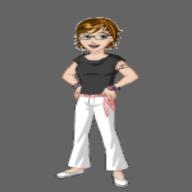什麼是Curriculum Vitae? 什麼是Brochure?
2006-11-21 9:15 am
什麼是Curriculum Vitae? 什麼是Brochure?
回答 (3)
2006-11-21 9:38 am
✔ 最佳答案
Curriculum Vitae: 履歷Brochure: 小冊子
2006-11-21 01:40:42 補充:
可參考http://hk.dictionary.yahoo.com/search.html?q=1&s=curriculum vitae&Submit= dr http://hk.dictionary.yahoo.com/search.html?q=1&s=brochure&Submit= dr
參考: 字典
2006-11-28 1:19 am
thx!
2006-11-21 9:45 am
A résumé or curriculum vitæ (CV) (from Latin "the course of one's life or career") is a document containing a summary or listing of relevant job experience and education, usually for the purpose of obtaining an interview when seeking employment. Often the résumé or CV is the first item that a potential employer encounters regarding the job seeker, and therefore a large amount of importance is often ascribed to it.
Traditionally, résumés have been, like careers themselves, oriented towards what a person has accomplished thus far. In most contemporary career consulting the trend is to fashion the document towards what that person can accomplish in a particular job. This is sometimes called a 'targeted résumé'.
The word résumé is used especially in the United States and in English Canada; the Latin term curriculum vitæ (often abbreviated CV) is instead used in the United Kingdom, Ireland, New Zealand, French Canada and some Commonwealth countries, as well as in the academic fields in North America, and in many languages other than English. In some regions (such as Australia and India) CV and résumé are used interchangeably.
A brochure or pamphlet is a paper advertisement. Brochures may advertise locations, events, hotels, products, services, etc. They are usually succinct in language and eye-catching in design. Direct mail and trade shows are common ways to distribute brochures to introduce a product or service. In hotels and other places that tourists frequent, brochure racks or stands may suggest visits to amusement parks and other points of interest.
Two of the most common brochure styles are single sheet and booklet forms. A common single sheet brochure is double-sided (printed on both sides) and folded into thirds. The layout of the brochure will dictate whether an accordion or "Z-fold" method, the "C-fold" method, or another folding arrangement is appropriate. Larger sheets, such as those with detailed maps or expansive photo spreads, are folded into four, five, or six panels. Booklet brochures are made of multiple sheets most often saddle stitched (stapled on the creased edge) or "perfect bound" like a paperback book.
Brochures are often printed using four color process on thick gloss paper to give an initial impression of quality. Businesses may turn out small quantities of brochures on a computer printer, but offset printing turns out higher quantities for less cost.
Compared with a flyer or handbill, a brochure usually uses higher-quality paper, more color, and is folded.
Traditionally, résumés have been, like careers themselves, oriented towards what a person has accomplished thus far. In most contemporary career consulting the trend is to fashion the document towards what that person can accomplish in a particular job. This is sometimes called a 'targeted résumé'.
The word résumé is used especially in the United States and in English Canada; the Latin term curriculum vitæ (often abbreviated CV) is instead used in the United Kingdom, Ireland, New Zealand, French Canada and some Commonwealth countries, as well as in the academic fields in North America, and in many languages other than English. In some regions (such as Australia and India) CV and résumé are used interchangeably.
A brochure or pamphlet is a paper advertisement. Brochures may advertise locations, events, hotels, products, services, etc. They are usually succinct in language and eye-catching in design. Direct mail and trade shows are common ways to distribute brochures to introduce a product or service. In hotels and other places that tourists frequent, brochure racks or stands may suggest visits to amusement parks and other points of interest.
Two of the most common brochure styles are single sheet and booklet forms. A common single sheet brochure is double-sided (printed on both sides) and folded into thirds. The layout of the brochure will dictate whether an accordion or "Z-fold" method, the "C-fold" method, or another folding arrangement is appropriate. Larger sheets, such as those with detailed maps or expansive photo spreads, are folded into four, five, or six panels. Booklet brochures are made of multiple sheets most often saddle stitched (stapled on the creased edge) or "perfect bound" like a paperback book.
Brochures are often printed using four color process on thick gloss paper to give an initial impression of quality. Businesses may turn out small quantities of brochures on a computer printer, but offset printing turns out higher quantities for less cost.
Compared with a flyer or handbill, a brochure usually uses higher-quality paper, more color, and is folded.
參考: Retrieved from "http://en.wikipedia.org/wiki/"
收錄日期: 2021-04-12 22:28:05
原文連結 [永久失效]:
https://hk.answers.yahoo.com/question/index?qid=20061121000051KK00244

